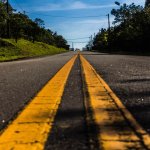Driving A Roundabout
Did you realize that Youngsville is the unofficial roundabout capital of Louisiana? Youngsville, Louisiana has at least seven roundabouts for a population under 15,000 people. According to an article in the Advocate newspaper that qualifies it for the recognition.
The city is proud of the fact that it was the first community in Lafayette Parish to embrace roundabout traffic signals and ahead of the pack. Lafayette opened a new roundabout in May 2020 at Hospital Drive and Girard Park. Motorists and pedestrians ought to feel optimistic about roundabouts and their potential to reduce accidents with personal injury.
The Acadiana Planning Commission is enthusiastic about the roundabout and officials believe in the research that shows that a roundabout reduces the number of fatalities and the severity of injuries in car crashes. It slows traffic movement down so if an incident does happen it is supposed to have fewer impacts on the passengers.
The Louisiana Department of Transportation and Development is equally sold on the effectiveness of roundabouts as a safety tool, defining them as follows: “Roundabouts are one-way, circular intersections designed to improve safety and efficiency for motorists, bicyclists and pedestrians. In a roundabout, traffic flows through a center island counterclockwise. A roundabout redirects some of the conflicting traffic, such as left turns, which cause crashes at traditional intersections.”
There are other advantages to roundabouts, proponents say. They are meant to improve traffic flow by reducing wait times at traffic lights and stop signs. Because there are no electric traffic signals, there are cost savings. And, if the power goes out, traffic is unaffected. Let’s face it, some drivers have a hard time figuring out the timing of four-way stops, creating confusion, delay and frustration. Circular roundabouts do away with that challenge.
According to the Advocate article, after the upfront cost of construction, a roundabout has a return of about $13 for every dollar spent during its 20-year lifespan, citing highway officials. That’s apparently due to lower operating costs and reductions in serious crashes, injuries and death.
Roundabout intersections still aren’t overwhelmingly common in the United States, and many Americans might go their entire lives without encountering one depending on the state they’re in. While roundabouts are widely known to be safer than traditional intersections on average, there have been certain roundabouts in the United States that were found to cause more accidents than the traditional intersections that they were built to replace.
One such roundabout in Detroit, Michigan was the site of 178 car crashes and 22 injuries in 2019 according to Michigan State Police Traffic Crash Data. According to that data, this roundabout is the third most dangerous intersection in all of Michigan. There are a multitude of factors that could contribute to this particular roundabout to being unusually dangerous, but what stands is the fact that multiple authorities have found roundabouts to be safer in average than signal-light intersections. The Federal Highway Administration has found that roundabouts reduce the types of crashes where people are seriously hurt or killed by 78-82% when compared to conventional stop-controlled and signalized intersections.
One factor that could explain the ineffectiveness of certain roundabouts is a lack of education. For every roundabout that’s unusually dangerous, statistics show that there are many, many more that serve to reduce car crashes and pedestrian injuries at that traffic juncture.
If you’re unsure of how to navigate a roundabout, The Federal Highway Administration has a wealth of resources available for educational purposes. Here’s a diagram from their intersection safety pages that can be helpful. Here are some tips from our state’s Department of Transportation and Development:
Look for the Roundabout signage. It is your first cue you are approaching a roundabout.
Start to slow down. Roundabouts are designed to reduce your speed upon entry. While it may seem counter-intuitive, slowing down in a roundabout alleviates congestion. Slower speeds also make roundabouts safer than traditional intersections. When approaching the roundabout, slow down to15 mph.
Share the road. Always look for bicyclists merging into the travel lane and/or pedestrians crossing. Let bicyclists merge. If a person is at the crosswalk, let them cross.
Yield to traffic. Vehicles traveling in the roundabout have the right-of-way. It is not the same as merging onto a highway. Slow down and yield, or sometimes stop, for traffic that is circulating the roundabout. Enter the roundabout when a safe gap is present.
You may have to stop to yield to cars on your left. If the road is clear, simply enter the roundabout, turning right. You don’t have to stop, just enter.
Proceed slowly.
Don’t pass bicyclists ahead of you within the roundabout. Continue until you get to your exit.
Do not stop in the roundabout and avoid changing lanes.
Follow directional signs. Directional signs will tell you where to exit.
Exit carefully – Using your right-turn signal, exit the roundabout.
As always, remember to watch for pedestrians, who should adhere to the following rules, courtesy of Louisiana DOTD:
- Use the designated crosswalk. Never walk in the roundabout or the central island.
- Cross one lane at a time to the splitter island. It provides refuge between lanes.
- When crossing an entry lane, watch for oncoming traffic. Even if you have the right-of-way when you are in the crosswalk, make sure that drivers see you and stop for you.
- When crossing an exit lane, watch for cars leaving the roundabout. You have the right-of-way, but proceed carefully.
Source: La. DOTD
If you or a loved one has been involved in a collision at a roundabout or other intersection due to someone else’s negligence, contact the automobile accident attorneys at Joseph Joy and Associates. We can help you get the money you deserve. Please call us with any questions about your accident at (337) 232-8123.




